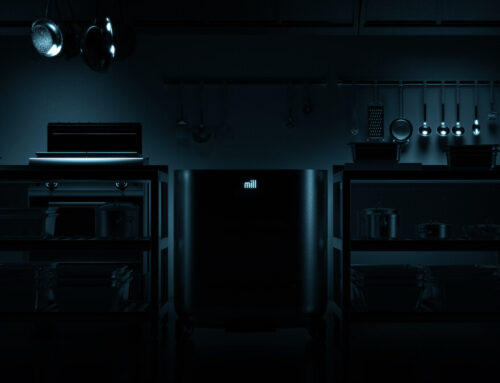Maryland lawmakers approve end of clean energy subsidies for trash incinerators
April 8, 2025
The Maryland General Assembly voted Monday to end a policy that has paid tens of millions of dollars in clean-energy subsidies in recent years to power plants that generate electricity by burning trash.
The proposal, which received final approval Monday from the Senate as part of a sweeping energy bill, comes as Maryland looks to slash energy-sector emissions to curb climate change. The legislation, introduced by Senate President Bill Ferguson and House Speaker Adrienne A. Jones, cleared the House chamber over the weekend, largely along party lines, and now heads to Gov. Wes Moore’s desk.
In the crosshairs of the proposal is a waste-burning plant in South Baltimore that has become a flashpoint in debates over the impacts of pollution for the low-income communities nearby.
Environmental advocates have tried and failed for years to cut off state subsidies for trash incinerators. But this year, Ferguson, one of the most powerful officials in Annapolis and the representative for the Baltimore district that includes the incinerator, threw his weight behind efforts to strip incinerators of their “renewable” label.
The Baltimore Banner thanks its sponsors. Become one.
A spokesperson for Moore didn’t say how the governor plans to act on the legislation, but Ferguson told reporters Monday that he expects the governor will sign the bill into law.
Carlos Sanchez is a resident of Lakeland near the incinerator and an organizer with the South Baltimore Community Land Trust, which has been campaigning for years against state support for the facility, formerly called BRESCO.
“Me and my fellow community members in South Baltimore who live next to BRESCO can breathe just a little easier,” said Sanchez, “knowing we will no longer pay trash incinerators to pollute our air.”
Still, Ferguson and other lawmakers backing the proposal argued this session that ending the renewable-energy subsidies wouldn’t put either of Maryland’s trash incinerators, the Baltimore facility or another in rural Montgomery County, out of business.
The company that operates the Baltimore plant, the New Hampshire-based WIN Waste Innovations, argued that the move could jeopardize its operations. Company officials also pointed to philanthropic work in Baltimore they said WIN Waste may no longer be able to support without the state subsidy.
The Baltimore Banner thanks its sponsors. Become one.
In a statement, WIN Waste spokesperson Mary Urban expressed disappointment that Maryland leaders “have chosen to disincentivize a non-fossil fuel, in-state energy-generating industry” even as they focused on Maryland’s power grid challenges this session.
“In its place, Maryland will now send subsidies to out-of-state businesses that pay no local taxes, employ no Maryland residents, and undermine the state’s renewable energy goals,” said Urban. “We believe that this legislation misaligns with the voice of Maryland residents, and they will unfortunately bear the brunt of its impact.”
Other polluting sources of energy, like chicken manure and methane gas from landfills, remain eligible for the renewable subsidy under the bill.
Since adding incinerators into Maryland’s highest renewable-energy tier in 2011, the subsidy has sent more than $100 million to trash-burning plants in both Maryland and Virginia, according to a report last year by progressive and environmental groups, which estimated that this payout could triple by 2030.
The WIN Waste facility in Baltimore collected $15.5 million between 2020 and 2023, with annual payments increasing fivefold as electricity prices climbed over that period, according to company figures.
The Baltimore Banner thanks its sponsors. Become one.
Legislation to end the incinerator subsidy was originally introduced as a stand-alone bill. To the frustration of some advocates, though, the proposal was rolled into a larger energy plan alongside some provisions that remain controversial to environmentalists.
Located between Interstate 95 and the Horseshoe Casino Baltimore, the WIN Waste facility is the largest single source of greenhouse gas emissions in Baltimore. Its emissions also include toxins like nitrous oxide and sulfur dioxide, which can contribute to respiratory problems and other health consequences.
Baltimore depends heavily on the facility to get rid of its garbage: About a third of trash picked up by city haulers in 2021 went to the incinerator.
WIN Waste, meanwhile, processes anywhere from 650,000 to 750,000 tons of trash annually, accepting around 200,000 tons each from Baltimore City and Baltimore County last year, according to company figures.
Jeffrey Barnes, a member with the group Progressive Maryland who advocated against the incinerator subsidy, said it’s not often that a grassroots coalition like his succeeds in the face of industry pressure.
The Baltimore Banner thanks its sponsors. Become one.
A resident of Brooklyn in South Baltimore, Barnes said he knows residents with health issues that they blame on the incinerator. To Barnes, classifying trash-burning plants as “renewable” looked like a way for Maryland to make its overall energy portfolio look cleaner, but he said he thinks cutting off the subsidy should be just a first step.
“I think the unspoken reality is people would like that incinerator shut down,” he said.
Search
RECENT PRESS RELEASES
Related Post




